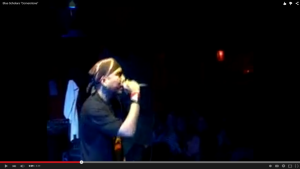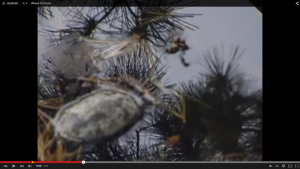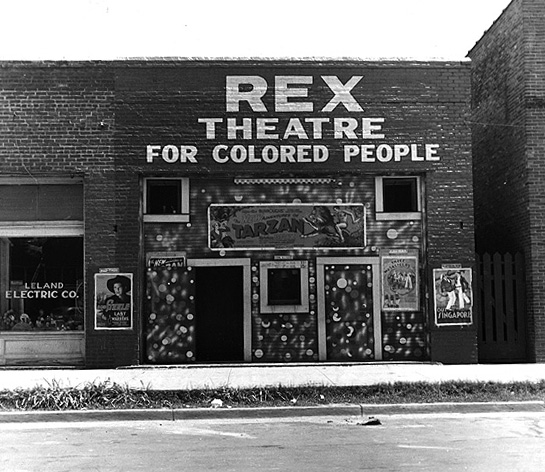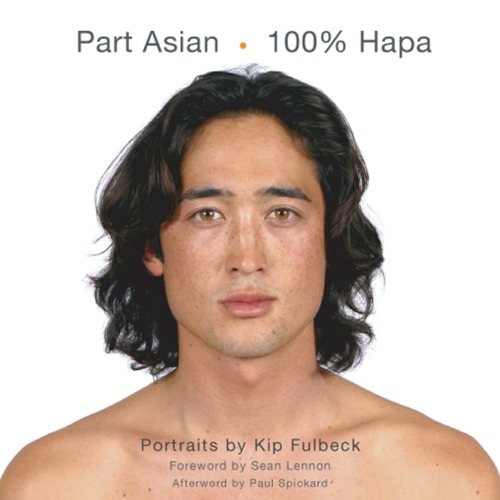Curatorial Statement
How many teachers find themselves looking for new and more socially relevant ways to engage with our students? How many of us have time to actually find new ways of doing this? Hours are spent pouring over paperwork, grading homework and assessments, and in various grade level or parent meetings. Our time, as teachers, is limited.
We are all looking for new and innovative ways to use writing as a means for our students to connect deeply and personally with both the writing process, but most especially with their lives. Searching for processes to connect a common goal while differentiating and scaffolding the assessment complicates this search even further. One approach that begins to look at the connection between all of these topics is teaching critical conversations through the personal narrative.
This archive strives to bring together resources, examples, and rubrics that could be easily applied, altered, or used alternatively to begin thinking about moving students towards the common goal of producing a personal narrative, but in multiple formats. Multiple modes of media are exhibited and utilized for student production and could be referenced to begin scaffolded personal narrative projects in your own classroom or simply use one as an alternative method for producing the personal narrative. Teacher choice and autonomy is just as important as student choice and differentiation.
Common Core and WIDA Standards
Elementary CCSS.ELA-LITERACY.W.4.3
Write narratives to develop real or imagined experiences or events using effective technique, descriptive details, and clear event sequences.
WIDA & Narrative Crafting
https://www.wida.us/standards/ELP_StandardDetail.aspx?es=105
WIDA & Narrative Conventions and Mechanics
https://www.wida.us/standards/ELP_StandardDetail.aspx?es=114
Middle Grades CCSS.ELA-LITERACY.W.7.3
Write narratives to develop real or imagined experiences or events using effective technique, relevant descriptive details, and well-structured event sequences.
WIDA & Narrative Editing
https://www.wida.us/standards/ELP_StandardDetail.aspx?es=154
WIDA & Composing Narratives using Synonyms and Antonyms
https://www.wida.us/standards/ELP_StandardDetail.aspx?es=162
Secondary CCSS.ELA-LITERACY.W.11-12.3
Write narratives to develop real or imagined experiences or events using effective technique, well-chosen details, and well-structured event sequences.
WIDA & Narrative Conventions
https://www.wida.us/standards/ELP_StandardDetail.aspx?es=203
WIDA & Composing Narratives using Literal and Figurative Language
https://www.wida.us/standards/ELP_StandardDetail.aspx?es=211
Narrative as Prose on Film
 Guiding Questions:
Guiding Questions:
- How does a narrator’s use of tone and mood in dialogue allow the writer to convey a more intimate message about their life?
- Explain how images can be used to convey a deeper message about the director’s life.
- Analyze the use of editing to direct the viewer’s attention to a greater message.
Introduction:
To introduce this piece, and the depth that the students could be pushed to, this YouTube artist, KevJumba, could be shown to begin engaging the students in this process. This film, in particular, is deeply personal, narrative, and completely appropriate to be shown in the classroom:
https://www.youtube.com/watch?v=sc0EnkjGZA0
Lesson:
The idea for this piece would be to have students actually write a narrative using the five senses. Scholastic has made a great tool for having students begin brainstorming using their five senses in writing which can be found here:
https://www.scholastic.com/teachers/article/collateral_resources/pdf/29/0545449529_e004.pdf
After the students have produced their written piece, they would take their cell phones or some other recording device to take footage for their personal narrative film. Most schools have access to Windows MovieMaker or it can found through open source sites like this:
http://windows-movie-maker.en.softonic.com/
Assessment:
Narrative Film Rubric
Narrative as Poetry
- What role does figurative language play in creating visual images and deeper meaning?
- Identify three visual representations of your identity.
- Explain the purpose for publication of finished pieces. When is a writte piece really finished?
Introduction:
To introduce this piece, and the depth that the students could be pushed to, this student produced YouTube piece, from student Justin Lee, could be shown to begin engaging the students in this process. This poem very subtly speaks to the dichotomy of cultural narrative and youth, and is completely appropriate to be shown in the classroom:
https://www.youtube.com/watch?v=iW5pEWibj7s&index=4&list=PL4eKjBh7OP6Z8TwroY3fyupZOqN7rXfuQ
Lesson:
The idea for this piece comes from George Ella Lyon’s poem “Where I’m From”. Many teachers have used this poem, but how can we ask our students to go deeper? If you aren’t already using it, here is a graphic organizer that will help your students begin to think about their own social identities:
http://www.swva.net/fred1st/wif.htm
Assessment:
Narrative Poem Rubric
Narrative as Comedy/Performance Piece
 Guiding Questions:
Guiding Questions:
- How does humor help to give writers a platform to write about more probing and controversial issues without eliciting a negative response from their audience?
- Define satire in your own words. Give three examples of satire in modern media.
- Compare and contrast a show like 60 Minutes, a more serious news program that speaks to current events in a direct manner, and a show like The Daily Show, that speaks to current events in a satirical manner.
Introduction:
To introduce this piece and how comedy can be used to talk about more serious and deeper issues this YouTube piece, from artist Happy Slip who uses comedy to speak on issues of cultural narratives around beauty and how isolating they can be for women of color, could be shown to begin engaging the students in this process. This short film is both very funny and classroom appropriate, in particular, it might be best to look at the clip from to :
https://www.youtube.com/watch?v=GTtMJGgzQO0
Lesson:
The idea for this piece comes from lessons not unlike this one from The Learning Network: Teaching and Learning with the New York Times. The lesson frames teaching humor in writing by having students write their own version of a tongue in cheek newscast, like The Daily Show.
http://learning.blogs.nytimes.com/2006/10/25/funny-business/
Assessment:
Narrative Performance Rubric
Narrative as Rap/Musical Performance Piece
 Guiding Questions:
Guiding Questions:
- How can figurative language in music be used to both convey deeper meaning and to provide musicality to the piece?
- Explain what audience rap and hiphop could be appeal to when trying to convey a deeper message.
- Analyze how the delivery of the message and the audience would change if this was written as a spoken word poem instead of performance piece of hiphop.
Introduction:
To introduce this piece and how hip hop can be used to talk about more serious and deeper issues this YouTube piece, from Blue Scholars who use rap to speak on issues both deeply personal and that speak of greater issues of growing up in poverty and a person of color. This could be shown to begin engaging the students in this process. Although the video, in its entirety, would not be classroom appropriate, it might be best to look at the clip from :53-1:07, 1:10-1:29, and 2:02-2:38:
https://www.youtube.com/watch?v=Iz6SjE-jRD4
Lesson:
The idea for this piece comes from the student body that I have worked with over the last decade. Using hip hop in the classroom can be a phenomenal way to engage students in the writing process. Many sources can be found on how to use hip hop, but this site has some interesting resources to get any teacher started:
http://eslhiphop.com/category/teachers/
Assessment
Narrative Musical Performance Rubric
Narrative as Radio Broadcast/Podcast
 Guiding Questions:
Guiding Questions:
- How can sounds be layered to paint a picture and convey a message to an audience?
- List three visual details that you would use to describe a family member and challenge yourself to use think of three sounds that could be captured to show and not tell about this person.
- Reflect on a personal story of struggle or joy that could be used to both share something personal about yourself, but also to give a perspective on a greater social or cultural identity issue.
Introduction:
To introduce this piece and how a radio broadcast or podcast can be used to talk about both personal and broader issues this audio piece, from Radio Rookies a youth empowerment radio organization based out of New York City. This could be shown to begin engaging the students in this process. Although the podcast, in its entirety, is eight minutes long it is also an incredibly great piece for teaching personal narrative as audiocast, especially to use a talking point about immigration.
Lesson:
The link below is an instructional guide, produced by Radio Rookies, to teach students the basics of radio skills. It is a great place to start.
Assessment:
Narrative Newscast Rubric
Narrative as Art
 Guiding Questions:
Guiding Questions:
- How can language be used in an art piece to help convey the artist’s message?
- Analyze the use of image to speak to a deeper message in a piece of street art.
- Compare and contrast gallery art and street art. Where do the two intersect and how are they each affected when they do intersect?
Introduction:
To introduce this piece and how visual art can be used to talk about both personal and broader issues this piece, from street artist Twist a Eurasian American artist who uses his art to speak on some greater social issues, can be used. This short video could be shown to begin engaging the students in this process. Also, this may be a wonderful opportunity to collaborate with your art teacher!
http://www.streetartbio.com/#!barry-mcgee/c5qu
Lesson:
The link below is a teaching guide for teaching graffiti and street art. It may be a great place to start.
https://blog.vandalog.com/2013/07/teaching-graffiti-history-and-practice/
Assessment:
Narrative Art Rubric
About Rachel Oviatt
Rachel Oviatt is a graduate student in Curriculum, Instruction and Teacher Education at the College of Education, Michigan State University. She taught for ten years in Atlanta, Bangkok, and Indianapolis. Over the course of her decade long teaching career, she taught high school English, middle school Language Arts, and upper elementary English Language Learners. She is currently working towards her Doctoral Candidacy in CITE with a focus in Secondary Education and Urban Education and is working for Michigan State University as a Teaching Assistant.









